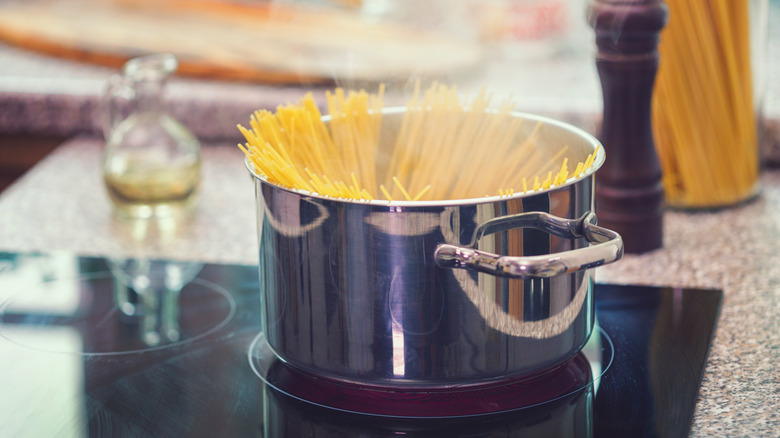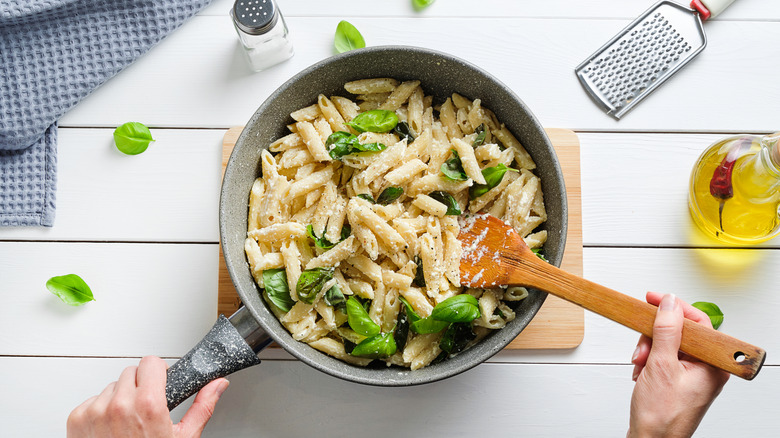Using A Small Pot Is One Of The Worst Things You Can Do When Cooking Pasta
We may receive a commission on purchases made from links.
Cooking a pot of pasta shouldn't be too hard. Just boil the water, throw in the pasta, wait a couple of minutes, drain, and voilà. But, when heavenly Italian carbs come out sticking in clumps or looking undesirable, it quickly dawns on you that maybe there's a little bit of finesse involved, after all. As it turns out, one of the biggest mistakes you're making with pasta is not using a big enough pot.
Throughout the cooking process, pasta releases starch — you can instantly see that in the water as it becomes cloudy. Starch acts as a binding agent, which is great for making sauce and why chefs always tell you to save some of your pasta water. This starch isn't always so great for the pasta itself, though. When you cook noodles in a smaller pot, starch concentration becomes too high and the pasta starts to stick together. The imbalance between the large amount of starchy carbs and limited amount of water also causes a temperature decrease, which leads to unevenly cooked pasta. Think: noodles that are either undercooked or with mushy, chewy textures — no thanks.
The reason for using a bigger pot is because pasta needs quite a lot of water to cook uniformly. For a standard one-pound box of noodles, you'll usually need at least a six-quart pot. The 766S-22 Stainless Steel Pasta Pot by Cuisinart is a great choice for its size. Plus, it even comes with a handy straining lid.
A small pot could work in a pinch, with some adjustments
If you've ever lived in a college dorm, you've likely seen pasta cooked in everything but an appropriate pot. Theoretically, pasta will get cooked as long as it's covered with boiling water; although we can't promise a gourmet end result. That said, sometimes you really do find yourself in a situation where a smaller pot is all you have available, so how can you make that work?
First, choose the right kind of pasta. To accommodate the smaller vessel, pick a smaller shape, such as elbow macaroni or penne, and avoid larger or longer varieties such as bucatini, tagliatelle, or fettuccine. Then, it's time to decide on a recipe. Depending on the quantity you're preparing, you could make a one-pot rasta pasta (for one!) where fusilli cook alongside the other ingredients in a single cooking vessel. If you're instead opting for a recipe where the pasta needs to be cooked separately, you could also cook everything in batches before adding them together.
In any case, continuously stirring the pot as the pasta cooks will help prevent clumping. Admittedly, this is somewhat hands-on, but it will rescue you from a sticky, starch-drowned dish.

